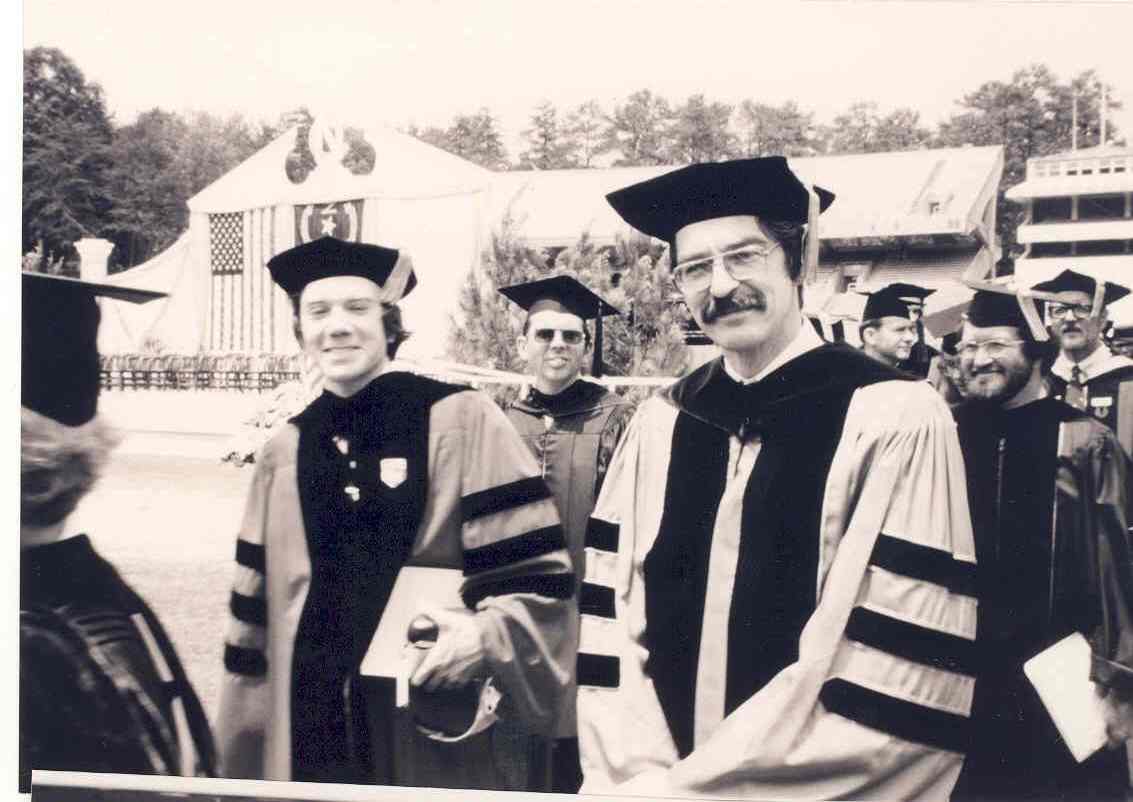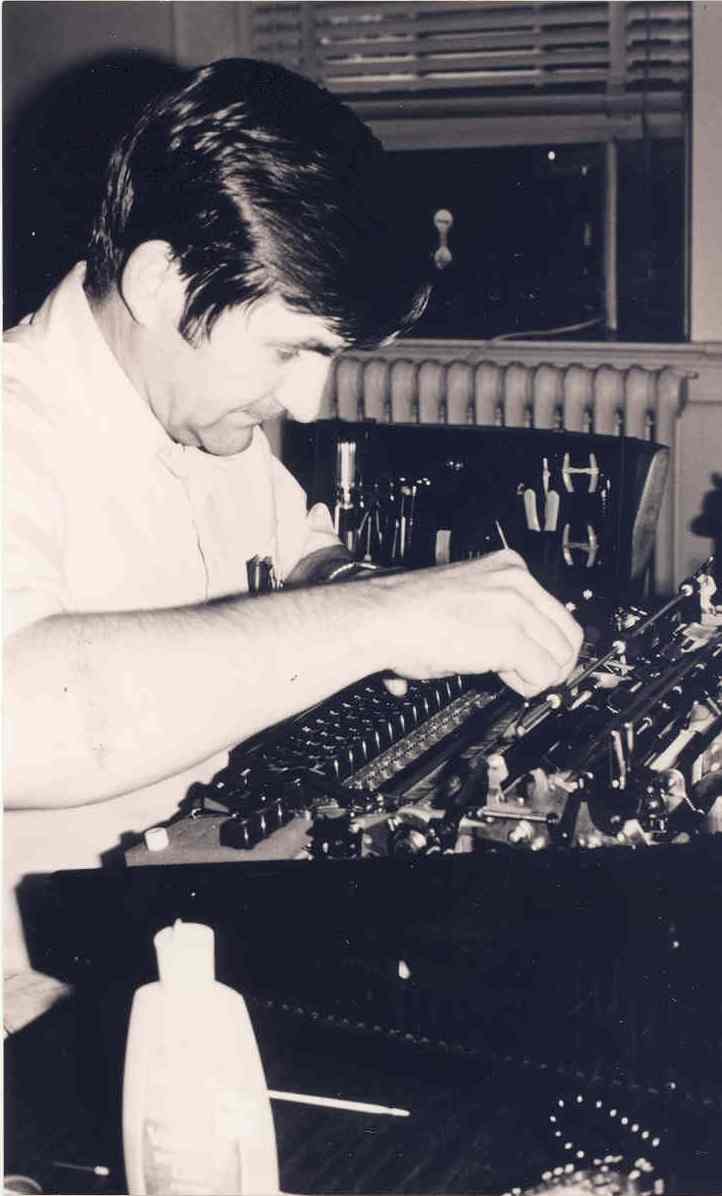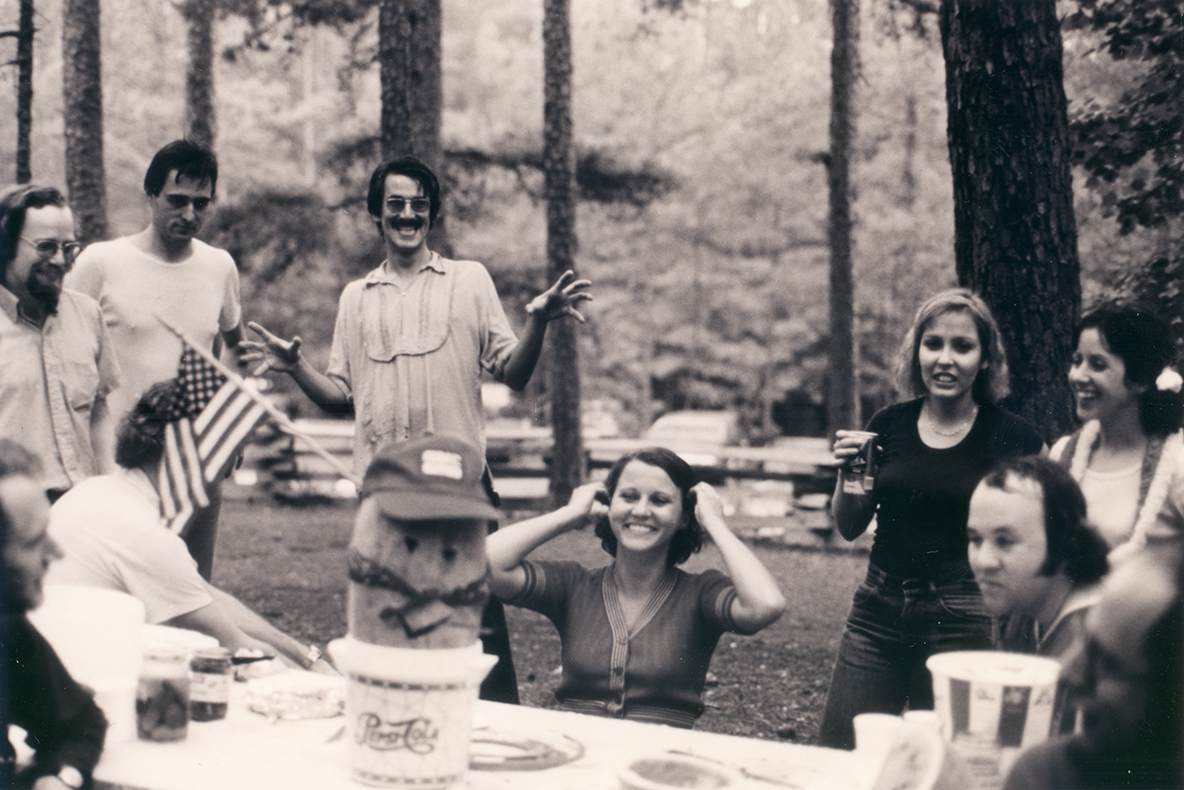History of the Department - 1970-1980: The Beginning
This academic year is the Department of Computer Science’s 50th year of service to Carolina. To honor our anniversary, we are presenting excerpts of the department’s creation and growth from Peter Calingaert’s personal history published in 1994.
With me left to hold the fort, Fred was awarded a Kenan leave of absence. He spent the spring and summer of 1970 in the Netherlands to begin work with Gerry Blaauw on their monograph on computer architecture. Left to my own devices, I blew the recruiting budget by hiring five new faculty members: Martin Dillon, Howard Elder, Jim Foley, Gyula Mago, and Steve Weiss. They appeared for the 1970-71 academic year.
Martin was already in Library Science; we appointed him jointly for four years, and he continued to teach information retrieval for us for another two after returning full-time to Library Science. Howard had completed Ph.D. study at Cornell, and was our first specialist in system software; he soon decided that professional practice was more attractive than academia. After one year he switched to an appointment joint with the Computation Center, and after a second year left to join Bell Labs. Jim came from the Computer, Information and Control Engineering program at the University of Michigan; his research was on computer architecture, graphics, and the application of queueing, simulation, and probability to computer systems. Gyula’s interests were in switching and automatic theory and in logical design. He was finishing his doctorate under David Wheeler at Cambridge; we couldn’t afford an interview trip, hence hired him sight unseen for a one-year visit with the hope of a regular appointment to follow. It followed indeed. A Cornell student of Gerry Salton (himself another Aiken student), Steve’s research was on information storage and retrieval and on natural language processing.
The next few years saw a steady state, with no change in faculty complement until Mehdi Jazayeri’s arrival in Spring 1975, as we assimilated the new faculty members, and rethought what we were doing. As part of a University-wide self-study, we published in January 1973 a report in which we stated that it was “educationally unsound to have undergraduates specialize in an area as young and undeveloped as computer science.”

Steve Weiss and Don Stanat at University Day in October 1973
The Bachelor of Science in Mathematical Sciences, created in 1971 had five options, one of which was Computer Science. Our intent was to prepare students for graduate study rather than for employment. Many undergraduates entered the option as a prelude to employment, however, because there was no other appropriate program. Enrollment was restricted; students took five semester courses in computer science, four of them jointly with graduate students. In 1975 we adopted an Honors Program under which a student with sufficiently high grades and extra work could receive the B.S. degree with honors or with highest honors. (Why does UNC-CH not have high honors?)
In 1973 Fred had notified Jim Gaskin, dean of the College, of his desire not to be reappointed chairman, and the Department faculty advised the dean to search outside. After various delays, we invited a few candidates to visit in 1974-75, but made no offers.
The year 1974-75 saw intense study of the graduate curricula by a faculty-student committee, and in 1975-76 the faculty debated and revised the committee proposals. We created many new courses and substantially revised the degree requirements. With a few adjustments, the new structure served through 1993-94.
A key issue was how to accommodate entering graduate students with disparate backgrounds. We created a set of short “immigration” courses lasting from one to six clock hours, to be offered while classes were starting in the Fall. Upon realizing that it might be difficult to explain our terminology to foreign students, we decided simply to call the offerings “microcourses.”
Academic year 1975-76 was the first full year for Mehdi Jazayeri, who had come from Case Western Reserve with strong credentials in programming languages. But it was also the last for both Jim Foley and Vic Wallace. Jim moved to George Washington University; Vic became department chairman at the University of Kansas. Our graphics strength was sorely reduced by their departures.

Jim Ross working on a Datel terminal in 1976
In 1976-77 we were joined by operating systems and software engineering expert Dave Parnas, who kept us all on our toes during the four years of his presence. While Mehdi was on leave in 1977-78, Steve Bellovin took the year off from his doctoral studies to serve as full-time instructor. I remember one lively and confusing faculty meeting at which nearly half the participants were named Steve.
During the Spring semester of 1978-79, Rik Vantilborgh visited from the Philips Research Laboratory in Brussels. Earlier that same year, we were joined by Henry Fuchs, who had been a student of Robert Plummer in the computer graphics program at Utah before teaching at the University of Texas at Dallas. Henry filled the void created by the loss of Foley and Wallace, and is with us still; in 1988 he was named Federico Gil professor.

John Coloutta, Kathy Yount, Lydia Papanikolaou, Paul Clements,
and Vicki Baker at the 1979 Department 4th of July picnic
In 1979-80, with Don Stanat on leave at IBM in California, Mehdi Jazayeri in his last year was joined by Carlo Ghezzi, visiting for one year from the Politecnico di Milano. The visit led to the collaboration on their textbook on programming languages. It was also Dave Parnas’s last year in our classrooms. Although he continued to hold an appointment, he moved his base to IBM and the Naval Research Laboratories. This period was characterized also by the rise of Unix, networking, and electronic mail. Jim Foley had tried to interest us in the Unix operating system around 1974, but met with substantial opposition. By 1978, however, the tide had turned and an active group of graduate students did the bulk of the work in propelling us into the mainstream of academic computer science computing. Of far-reaching influence beyond the Department was Usenet, the network conceived by Duke graduate students Jim Ellis and Tom Truscott. It was implemented in the last quarter of 1979 by them and our graduate student Steve Bellovin, who wrote the first version of netnews as well as the getdate() subroutine, which lives today. Usenet had been characterized as the “poor man’s Arpanet” and first made network news widely available to the academic computer science community.
